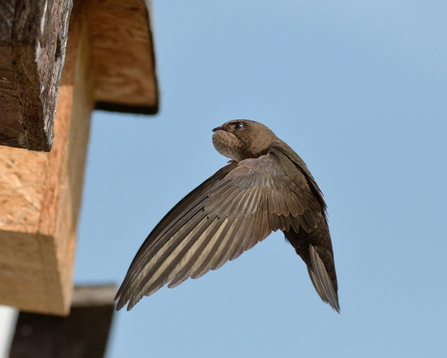
Common swift flying to a nest box by Nick Upton
Green Hairstreak butterfly by Jim Higham

Common swift flying to a nest box by Nick Upton
Parties of screaming swifts filling the skies are a sure sign that summer is on its way. Amazingly, they can sleep while still flying!
Have a look at our infographic to help you identify swifts, swallows and martins as they fly overhead.

Green Hairstreak butterfly by Jim Higham
May is the first month of the year to see the new generation of many butterflies.
Pale holly blues can be seen flitting around gardens, hedgerows and in open woodlands, and the brown-and-white grizzled skipper frequents flowery places. The green hairstreak only appears green when its wings are closed because it is the undersides that are so strikingly-coloured – helping it blend into foliage. The tops of its wings are a dull brown colour, meaning it can almost disappear when it lands among green leaves.
Look out as well for the first generation of red admiral, brown argus and large white.
Our Yoesden reserve near High Wycombe is a great place to see butterflies that love open, chalk grassland, and our Dancersend reserve near Aylesbury has a host of woodland species.
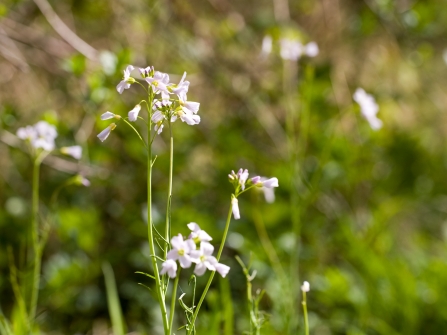
This delicate flower generally starts to bloom when cuckoos start to call, hence its name, though sadly these days you’re more likely to see a cuckooflower than hear a cuckoo, which are becoming increasingly rare.
Cuckooflowers, also known as ‘lady’s smock’, grow in damp meadows and woodland rides, and are one of the food plants of orange-tip butterfly caterpillars.

Common lizard in heather by Matthew Hearne
Have you ever seen a lizard in the UK? We have a lot of them! Common lizards can be found on many of our reserves including Snelsmore Common near Newbury and Sydlings Copse near Oxford.
Look out for them on sunny days, basking in the sunshine to warm up before they go hunting for worms and other invertebrates.
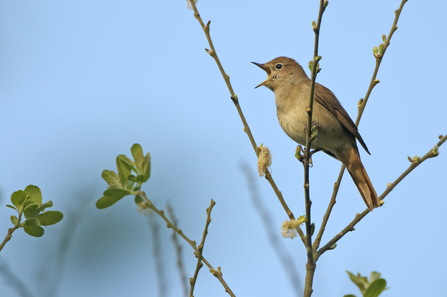
Nightingale © Chris Gomersall/2020VISION
Nightingales are on the BTO Red List as numbers have been declining in recent years. Nightingales spend the winter in Africa, returning here to breed in the spring.
They tend to skulk in thick scrub and thickets so you are much more likely to hear their melodic song than see one. If you're near to these BBOWT nature reserves, listen out for them - Greenham Common and Hosehill Lake (both Berks).
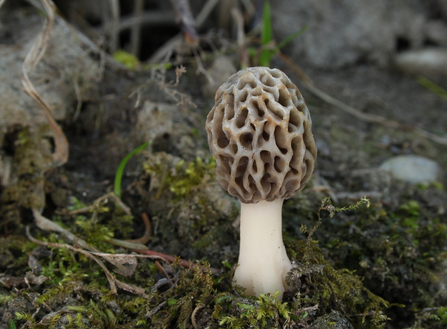
A morel mushroom growing in a woodland. Picture: Holger Krisp
Morel mushrooms are instantly recognisable by their honeycomb caps in shades of brown and grey. Although a native species, they are uncommon, but May is a great time to look for them in woodland and hedgerows.
Poisonous when raw, this species - like many fungi - is the subject of much folklore, and was once said to be the work of the devil. In Chinese medicine it is used to treat indigestion and shortness of breath. Please remember not to pick fungi on any of our nature reserves – take only photos and not mushrooms!

A cockchafer beetle about to take flight. Picture: Nick Upton/2020Vision
Look out for these large, noisy beetles called cockchafers or May bugs flying on late spring evenings. If you see one pay close attention to their antennae – males have seven ‘leaves’ while females only have six!
The larvae can spend several years underground before emerging at the end of April or early May. These large beetles fly around looking for a mate. They don’t live long as an adult, just long enough to breed and for the female to lay the next generation of eggs.

Mallard with ducklings by Andrew Parkinson/2020VISION
All birds have chicks, and the lake at BBOWT's Nature Discovery Centre in Thatcham is one of the best places to see waterfowl in our three counties. As well as fluffy ducklings, goslings and cygnets, look out for great crested greblings riding on their mothers’ backs, and a host of other chicks appearing over the coming weeks.
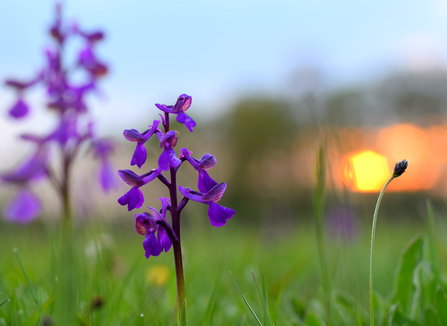
Green-winged orchid, Bernwood Meadows by Heather Jenkins
Green-winged orchids bloom in their thousands in Bernwood Meadows (Bucks). They used to be widespread in hay meadows and pastures like these but sadly numbers have declined as pastures are ploughed up.
The sight of thousands flowering in the ancient ridge and furrow fields at Bernwood Meadows and Asham Meads (Oxon) is increasingly precious as nature reserves become the last safe havens for these orchids.
Green-winged orchids come in many colours from all shades of purple to pink, and occasionally pure white.
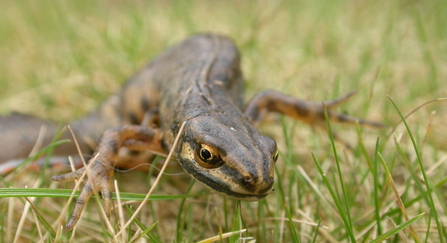
Smooth newt © Philip Precey
While frogs and toads have mostly finished mating by now, and ponds are starting to blossom with black clouds of their tadpoles, newts will continue breeding into May. Our Kintbury Newt Ponds in West Berkshire is a fantastic place to spot newts, boasting all three British species. Female newts lay their eggs at night, by folding submerged leaves in half to make little pockets. See if you can spot these curious half-leaves in ponds this month.
Sign up below to receive the latest news from BBOWT, tips about how you can help wildlife, plus information on how you can get involved.